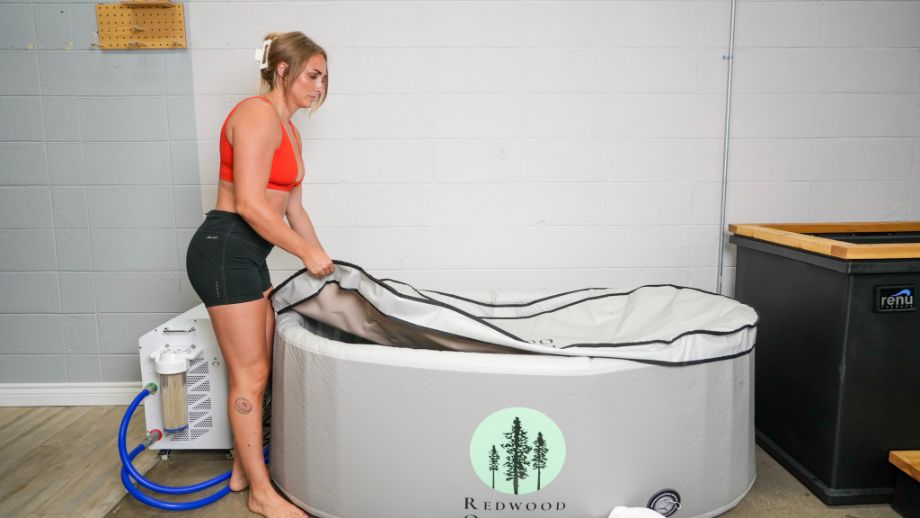We test and review fitness products based on an independent, multi-point methodology. If you use our links to purchase something, we may earn a commission. Read our disclosures.
Cold water therapy is a popular tool for muscle recovery and stress reduction, but the best cold plunge tubs can often be expensive. Even DIY ice baths can be costly with having to buy bags of ice for daily use.
You can make sure you’re getting your money’s worth by properly cleaning and maintaining your cold plunge. Keeping your cold plunge clean will help keep your chiller and filtration system working at top levels, extend your tub’s potential lifespan, and overall improve your cold plunge experience.
What does cold plunge maintenance look like for your cold plunge? As a competitive weightlifter and 2020 Olympian, I’ve used ice baths ranging from DIY cold plunge stock tanks to premium cold tubs at the Olympic Training Center, and have also had the experience of maintaining them.
In this guide I’ll go over regular maintenance for your cold plunge: why to do it, what to do, and how often. By the end, you’ll be ready to ensure the longevity of your premium recovery tool.
What Is a Cold Plunge?
A cold plunge is the act of immersing yourself in cold ice bath water—usually around 55 degrees or colder—for a short time. The time will depend on the temperature of the water and your tolerance to the cold, but most people aim for 5 to 10 minutes. You can cold plunge in stock tanks with ice water, specially made cold plunge tubs, or even pools designed for cold water immersion.
Cold tubs and cold plunging have been around for a while, but have become increasingly popular over the past couple of years due to celebrities and athletes sharing their cold water therapy sessions on social media.
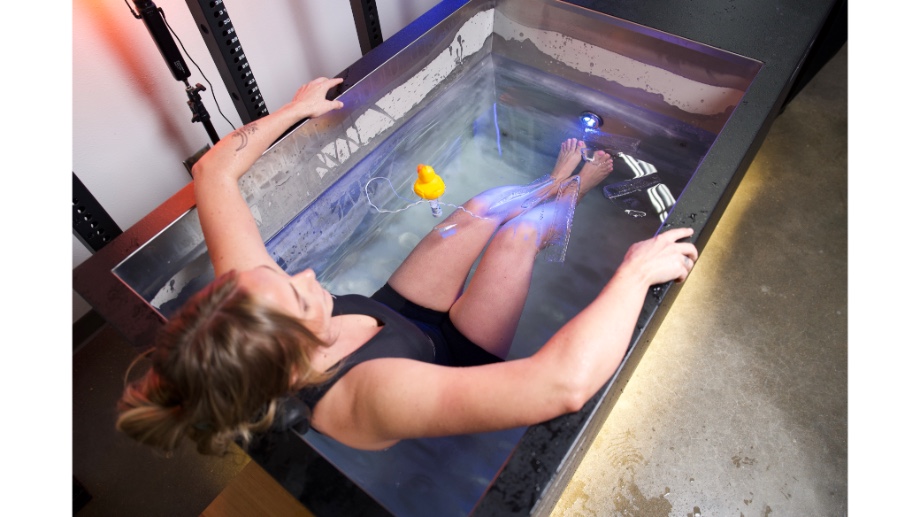
While research is still limited, ice bath benefits can include:
- Boosting your immune system1
- Aiding in muscle recovery2
- Improved mood3 and mental well-being
- Stress reduction4
- Better perceived quality of sleep5
- Increased energy activity6 in adipose tissue, which may aid in weight loss
The Importance of Cold Plunge Maintenance
Keeping your cold plunge in tip-top shape will help keep your cold tub running more efficiently and for longer. Keeping its performance smooth helps ensure longevity from your ice bath tub, preventing buildup of grime or mildew, which can gunk up any tubes to filters or chillers.
All home gym equipment requires some level of maintenance, but with cold plunge tubs (and home saunas) maintenance is vital, since we’re dealing with water and sweat. In between uses, a tub’s water can warm up, and warm water can be a breeding ground for bacteria and other impurities. You can combat this, however, with some daily and routine maintenance.
RELATED: Sauna Maintenance Tips
Daily Cold Plunge Maintenance
Now that you understand the importance of maintaining your cold plunge, let’s get into the nitty-gritty of keeping your ice bath operating at its highest quality. We’ll start off with some things you can do daily–-or each day that you use your cold plunge.
Use a Cover
One of the simplest ways to keep clean water is to cover your cold plunge when it’s not in use…especially if it’s outdoors. A cover is simply a barrier from any debris your cold plunge could pick up—leaves, sticks, dust, and other particles.
Many high-end cold plunge tubs come with a cover, but if you’re using a stock tank, you’ll have to purchase a tarp to keep the tub covered in between uses.
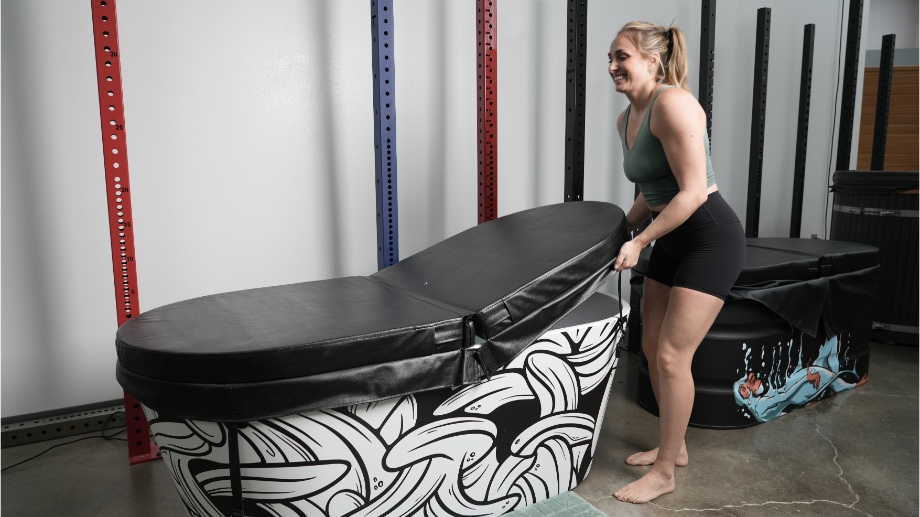
Check the Water Quality
Premium ice baths will have a temperature-controlled chiller and filtration system that can run in between uses and keep the water cold and clean on a daily basis, but not every ice bath option comes with that level of purification. If you’re using a stock tank or similar DIY alternative and keeping the water around between uses, you’ll need to check the water quality before each use.
To keep the water sanitized, you’ll need an oxidizer, which inhibits bacterial growth through the process of oxidation. Bromine, an alternative to chlorine that’s often used in hot tubs and spas, is an excellent choice. I myself have poured bromine granules into a cold tub before to maintain its cleanliness for a few days at a time.
RELATED: Cold Plunge Benefits
Using an oxidizer like bromine can affect the water chemistry, so getting test strips to determine the water’s pH levels is important. Ideally, we want the pH level just above neutral (7.0 to 7.6) to keep the water safe. Anything higher or lower can cause skin or eye irritation.
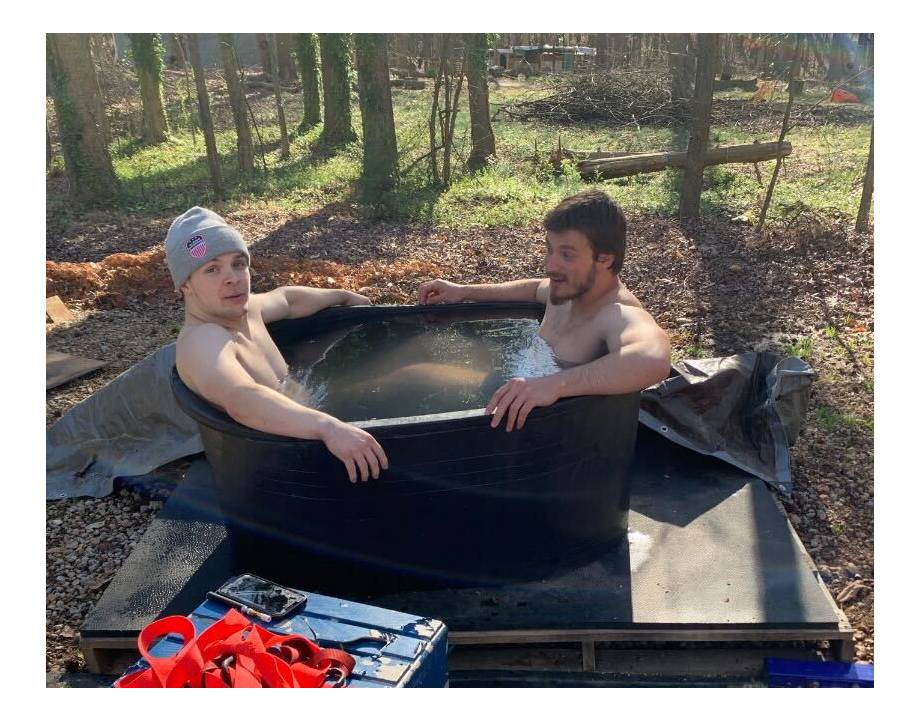
If the pH is low, add more water; if it’s high, add a touch more bromine. This can also be a good indicator that your water should be replaced. If your cold tub doesn’t have a chiller or water filter, I would regularly use an oxidizer and change the water every few days at least.
Daily Cleaning
Each time you use your cold plunge tub, you can leave debris and oils from your body onto the water. Make sure to clean the tub after use. This doesn’t mean you need to drain and clean your tub after each use (although you may want to if you’re using a stock tank).
Here are a few quick things you can do every time you use your cold plunge to keep it clean from day-to-day use:
- Wipe your feet clean before stepping into your cold tub, as your feet can carry dirt and dust from the ground or floor and into the tub.
- Use a pool skimmer to pluck any large particles from the tub, like leaves or dirt.
- Wipe around the edge and interior of the tub with a damp washcloth, to pick up any oils or grime that may have been left in the cold plunge.
Performing these daily tasks takes only a few minutes, but can extend the cleanliness of the water and your tub for much longer.
Routine Cleaning and Sanitizing Your Cold Plunge
Even if you’re cleaning your cold plunge tubs daily, there will come a time where you’ll need to replace the water, filters, pumps, or faulty parts. Many cold plunge tubs will have instructions on how often to change water or replace filters. Additionally, some companies include maintenance kits or have them available for purchase.
RELATED: How to Cold Plunge
If your tub doesn’t have instructions or kits, here are some basic guidelines for long-term maintenance.
Filtration and Sanitation
Many cold plunge tubs have built-in filters and sanitizers, and from time to time, these will need to be replaced. Typically, a filter can last a few months before needing to be replaced, but it’ll depend on the frequency in which you use your cold plunge. It’s a good idea to check the filtration system regularly—once every week or two—to make sure there’s no excessive build-up in or on your filters.
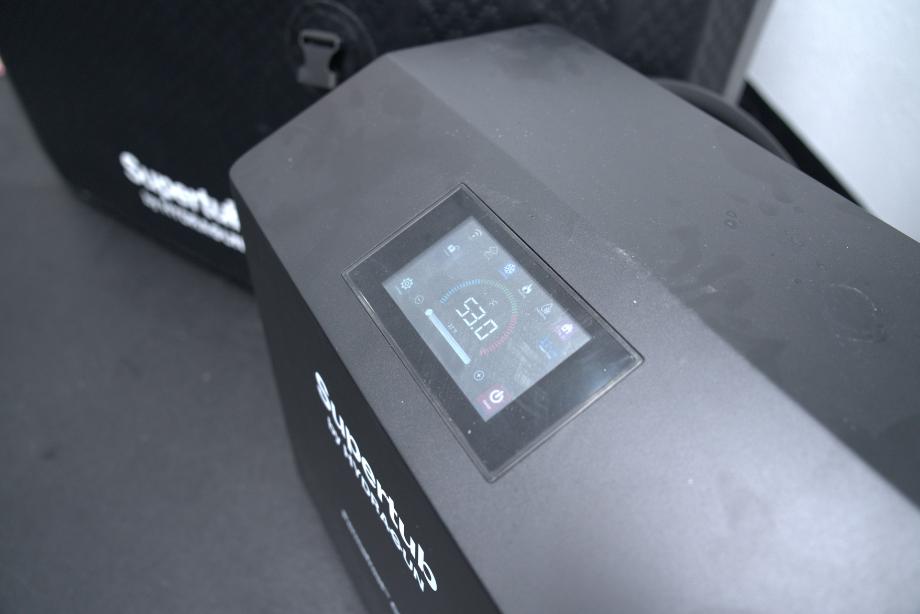
When it comes time to replace your filter, the company may sell replacements online, which will take the guesswork out of buying the right filter. If you’d rather shop around, make sure you get the right filter, since they come in all shapes and sizes. Simply do your research beforehand.
Routine Draining and Cleaning
Again, your cold plunge tub may have directions for how often to drain and clean it, but most ice baths with filtration units can go for a few months before needing to be deep cleaned. (If you’re using a stock tank and oxidizing with bromine, you definitely will need to swap out water weekly, if not more frequently.)
RELATED: Ice Bath Vs Cold Shower
When it comes time to clean out your tub, make sure to do the following:
- Fully drain the cold plunge tub before beginning to clean it.
- Use a soft and damp washcloth to wipe the interior of the tub.
- Sanitize the cold tub. If the instructions don’t recommend a cleaner, you can use diluted bleach or a natural, less-irritating disinfectant like vinegar, peroxide, or baking soda, for example.
- Let the sanitizer sit before rinsing the tub out completely with water.
Once the cold tub has been deep cleaned, you can double-check your filters and then fill up your tub with water again.
Inspecting for Leaks and Other Faulty Parts
Another aspect of cold plunge maintenance is checking that all parts are operating properly. While you don’t need to deeply inspect your cold plunge each day, it’s a wise practice to spot-check your tub for leaks, cracks, or parts malfunctioning. Make sure that the water flow isn’t obstructed in any tubing, too.
Keeping an eye on these things can prevent a small problem from becoming a bigger problem down the road. If your tub is still under warranty, contact the company if you notice a faulty part or other issue.
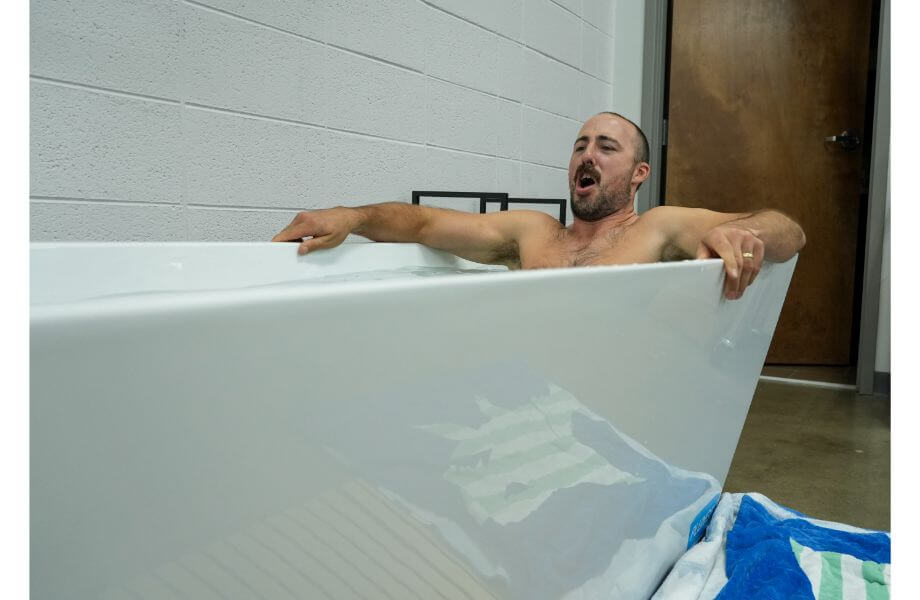
Common Issues for Cold Plunges
Listed are some common problems that arise with cold plunge tubs, and how you can troubleshoot them.
- Leaks are present: If you’re noticing a leak in your cold plunge tub, it could be from improper installation or just general wear and tear. Inspect and tighten any fittings, pipes, and tubing. Address any leak you find by sealing the hole or crack.
- The pump isn’t working: The pump malfunctioning can affect the circulation and freshness of your tub’s water. Check for any obstructions that are preventing the water flow. If you need, contact a professional to repair or replace the pump.
- Water is cloudy: Cloudy water can mean there’s a problem with the filter, or chemicals are off-balance in the water. Check the filter and replace it if needed, and make sure to test the pH levels of the water, adjusting the water chemistry if needed.
- The water temperature is fluctuating: Chillers have a thermostat to regulate water temperature. If you’re having issues with the temperature, check that the thermostat is functioning and set properly. Talk with a professional to see if the part needs to be replaced.
Keeping on top of issues and parts can help keep problems small and minimal. Remember to contact your cold plunge company if your product is under warranty as well.
Cold Plunge Maintenance: Final Thoughts
Maintaining your cold plunge tub properly will help it perform at a top level for longer. Regardless of the type of cold plunge or ice bath you have, it’s good to do some daily upkeep with the tub:
- Cover the ice bath while not in use.
- Use a pool skimmer to remove leaves, particles, and debris from your tub.
- Wipe the interior daily to prevent any buildup of oils or mildew.
- Test the pH levels to make sure the water is balanced and sanitized.
In addition to daily maintenance, you can also keep a regular schedule of draining and deep cleaning your cold plunge tub. Oftentimes, the manufacturer will have specific instructions on how to properly maintain your ice bath. Some even sell maintenance packages for their specific cold plunge tubs. If not, you can follow these general guidelines:
- Completely drain the tub before cleaning and sanitizing.
- Wipe the entire interior of your tub with a soft and damp washcloth.
- Sanitize the tub of any contaminants with diluted bleach, a natural disinfectant, or a recommended cleaner from your cold plunge brand.
- Let the sanitizer sit before rinsing out completely with water.
- Routinely check any filtration units and replace filters as needed.
Along with these guidelines, routinely check for leaks and faulty parts in your ice bath before they become larger problems. Following these general guidelines will help you get the most out of your cold plunge tubs for your recovery and safety.
Cold Plunge Maintenance: FAQs
Can I put vinegar in my cold plunge?
deally, you should use whatever cleaner your cold plunge tub recommends. However, you can use some alternative natural disinfectants to help clean out your tub during deep cleans. Products like vinegar, Epsom salt, hydrogen peroxide, or baking soda can help disinfect your ice bath without causing irritation on your skin afterward.
How often should I take ice baths?
There’s no wrong answer to how often you should take ice baths; a lot of it will depend on your tolerance of cold water immersion. Most people aim for three or four times each week, although beginners may aim for just two ice bath sessions. More experienced cold plunge users may use a cold plunge session daily, too.
How often should I change cold plunge water?
The frequency to change cold plunge water will depend on the filtration and sanitation system within the cold plunge tub. Premium cold plunges with top-tier filtration units may only need draining and water replacement once every three months, while stock tanks with no filtration or chiller will require daily changes of water (although there are ways to help preserve the water for a couple of extra days).
References
- Brenner, I. K., Castellani, J. W., Gabaree, C., Young, A. J., Zamecnik, J., Shephard, R. J., & Shek, P. N. (1999). Immune changes in humans during cold exposure: effects of prior heating and exercise. Journal of applied physiology (Bethesda, Md. : 1985), 87(2), 699–710. https://doi.org/10.1152/jappl.1999.87.2.699
- Peake, J. M., Roberts, L. A., Figueiredo, V. C., Egner, I., Krog, S., Aas, S. N., Suzuki, K., Markworth, J. F., Coombes, J. S., Cameron-Smith, D., & Raastad, T. (2017). The effects of cold water immersion and active recovery on inflammation and cell stress responses in human skeletal muscle after resistance exercise. The Journal of physiology, 595(3), 695–711. https://doi.org/10.1113/JP272881
- Shevchuk N. A. (2008). Adapted cold shower as a potential treatment for depression. Medical hypotheses, 70(5), 995–1001. https://doi.org/10.1016/j.mehy.2007.04.052
- Kurniasari, M. D., Monsen, K. A., Weng, S. F., Yang, C. Y., & Tsai, H. T. (2022). Cold Water Immersion Directly and Mediated by Alleviated Pain to Promote Quality of Life in Indonesian with Gout Arthritis: A Community-based Randomized Controlled Trial. Biological research for nursing, 24(2), 245–258. https://doi.org/10.1177/10998004211063547
- Al Haddad, H., Parouty, J., & Buchheit, M. (2012). Effect of daily cold water immersion on heart rate variability and subjective ratings of well-being in highly trained swimmers. International journal of sports physiology and performance, 7(1), 33–38. https://doi.org/10.1123/ijspp.7.1.33
- Peres Valgas da Silva, C., Hernández-Saavedra, D., White, J. D., & Stanford, K. I. (2019). Cold and Exercise: Therapeutic Tools to Activate Brown Adipose Tissue and Combat Obesity. Biology, 8(1), 9. https://doi.org/10.3390/biology8010009
Further reading

If you’re wondering about the best health coaching programs to start or further your career in wellness, read our guide written by a certified health coach. Read more

Wondering how to train for mountain biking, rock climbing, backpacking, or kayaking? Here's how to set up your home gym for outdoor training. Read more

In this Schwinn 420 elliptical review, we take a look at an older but solid elliptical with a modern cousin worth adding to your home gym. Read more

We have tested dozens of machines to narrow down the best commercial exercise bikes on the market. Read more

